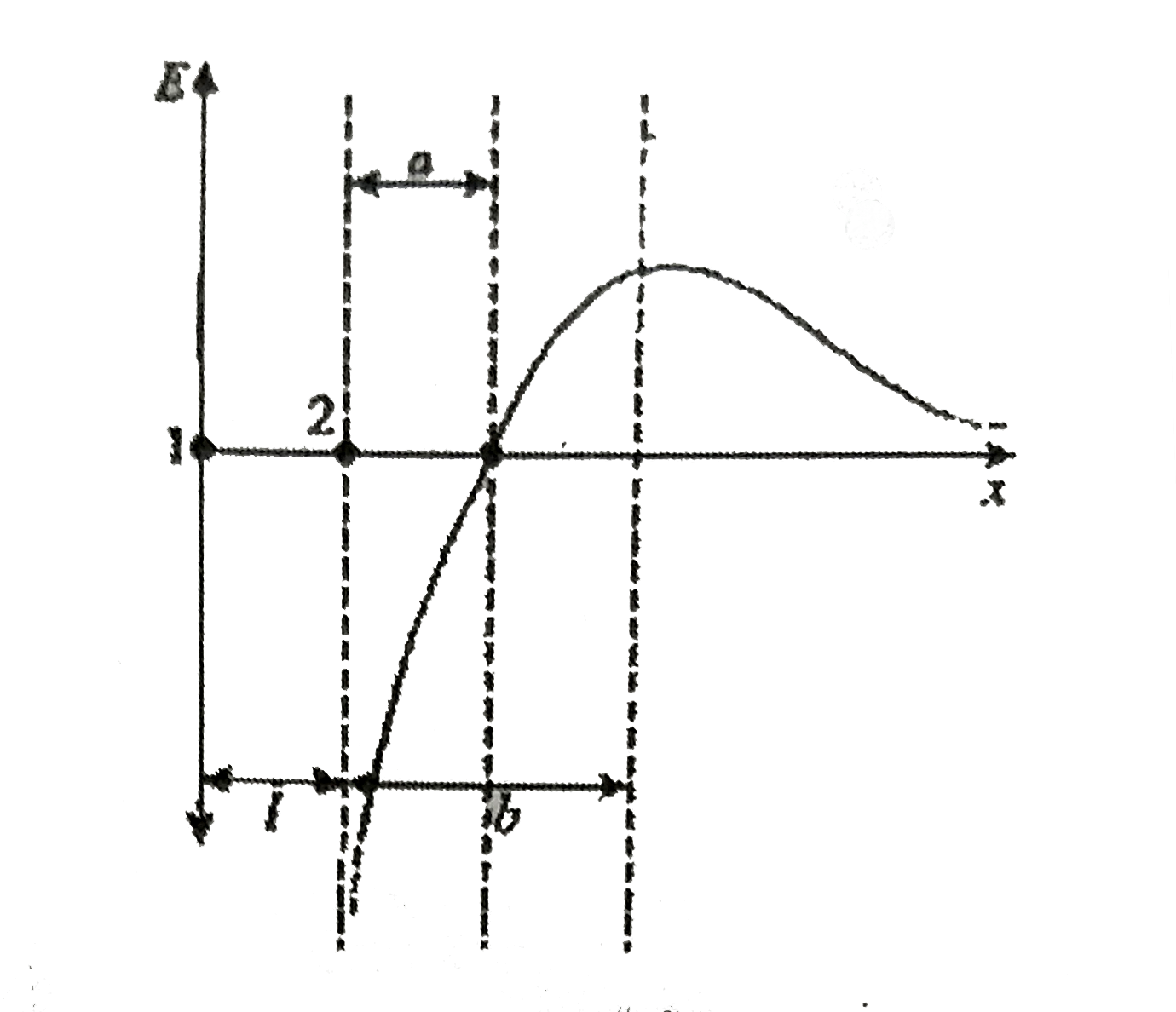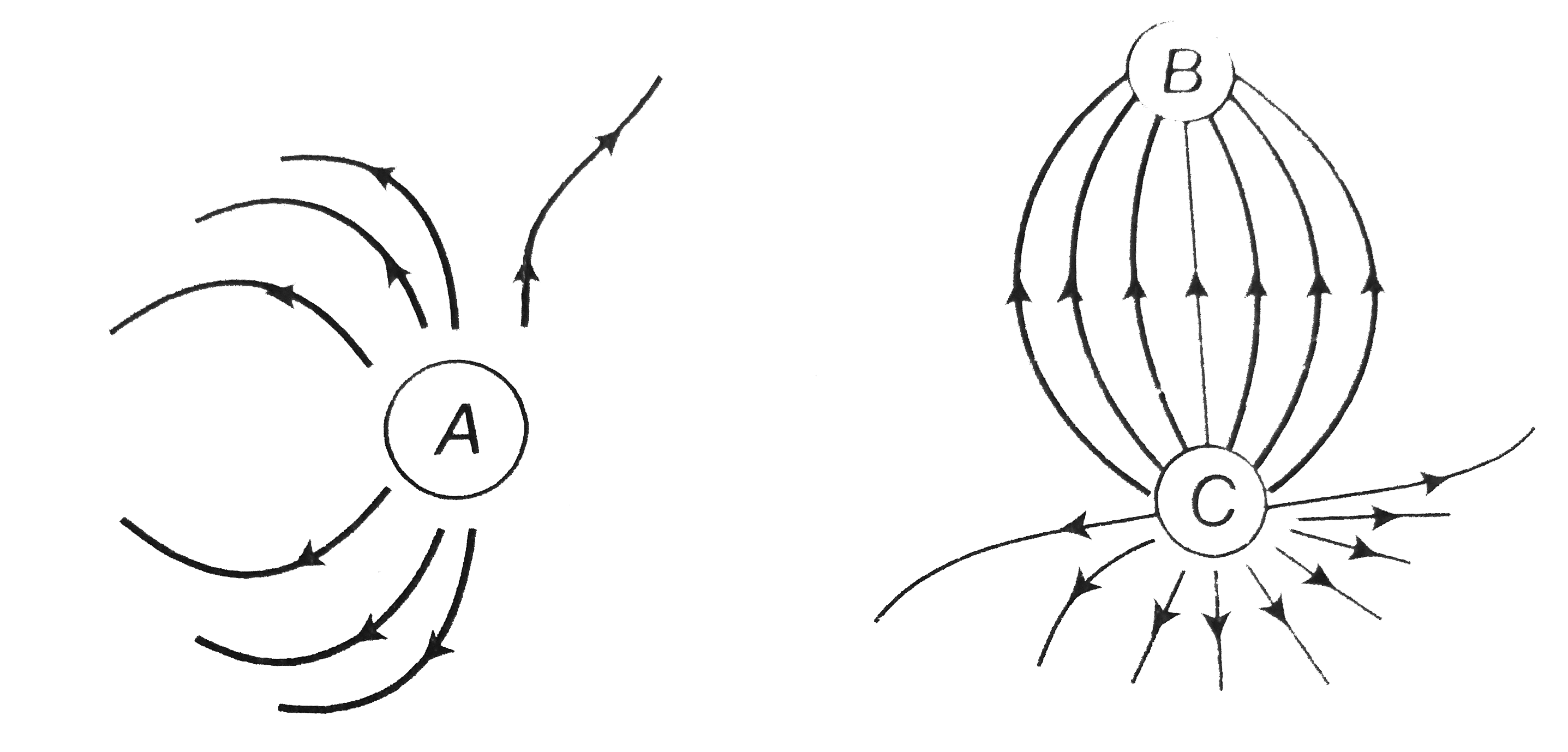If 8 field lines come out of + 1 C charge, how many field lines will end at -2C charge?
0
8
16
32
The correct Answer is:C
To solve the problem of how many electric field lines will end at a -2 C charge given that 8 field lines come out of a +1 C charge, we can follow these steps:
1. Understand the Relationship: Electric field lines are directly proportional to the magnitude of the charge. This means that if we know the number of field lines for one charge, we can calculate it for another charge using their magnitudes.
2. Identify Given Values:
- Charge Q1=+1C
- Number of field lines from Q1 (denoted as L1) = 8
- Charge Q2=−2C (we only consider the magnitude, which is 2 C)
3. Set Up the Proportionality: Since the number of field lines is proportional to the magnitude of the charge, we can express this relationship mathematically:
L1L2=Q1Q2
where L2 is the number of field lines ending at the -2 C charge.
4. Substitute Known Values:
8L2=12
5. Cross-Multiply to Solve for L2:
8⋅2=1⋅L2
L2=16
6. Conclusion: Therefore, the number of field lines that will end at the -2 C charge is 16.
Final Answer:
The number of field lines that will end at the -2 C charge is 16.
- Charge Q1=+1C
- Number of field lines from Q1 (denoted as L1) = 8
- Charge Q2=−2C (we only consider the magnitude, which is 2 C)
L1L2=Q1Q2
where L2 is the number of field lines ending at the -2 C charge.
8L2=12
8⋅2=1⋅L2
L2=16
The number of field lines that will end at the -2 C charge is 16.
Topper's Solved these Questions
- BOOK - CENGAGE PHYSICSCHAPTER - STATIC ELECTRICITYEXERCISE - MANDATORY EXERCISE (Exercise Set II)13videos
STATIC ELECTRICITY
- BOOK - CENGAGE PHYSICSCHAPTER - STATIC ELECTRICITYEXERCISE - CONSOLIDATED EXERCISE4videos
STATIC ELECTRICITY
- BOOK - CENGAGE PHYSICSCHAPTER - STATIC ELECTRICITYEXERCISE - MANDATORY EXERCISE (Exercise Set I)52videos
STATIC ELECTRICITY
- BOOK - CENGAGE PHYSICSCHAPTER - SOURCES OF ELECTRIC CURRENTEXERCISE - OLYMPIAD AND NTSE LEVEL EXERCISES10videos
SOURCES OF ELECTRIC CURRENT
- BOOK - CENGAGE PHYSICSCHAPTER - TRANSFER OF HEATEXERCISE - OLYMPIAD AND NTSE LEVEL EXERCISES10videos
TRANSFER OF HEAT
Similar Questions
Knowledge Check
- Question 1 - Select One
A: The magnetic field always accelerates a moving charge if the moving charge cuts the field lines.
R: When a moving charge cuts the magnetic field lines, the magnetic force on the charge is always non zero.AIf both Assertion & Reason are true and the reason is the correct explanation of the assertion then mark (1)BIf both Assertion & Reason are true but the reason is not the correct explanation of the assertion, then mark 2.CIf assertion is true statement but Reason is false, then mark (3)DIf both Assertion and Reason are false statements, then mark (4) - Question 2 - Select One
A : We may have a Gaussian surface in which less number of field lines enter and more field lines come out.
R : The electric field E in the Gauss's law is only due to the enclosed charges.AIf both Assertion & Reason are true and the reason is the correct explanation of the assertion, then mark (1).BIf both Assertion & Reason are true but the reason is not the correct explanation of the assertion, then mark (2).CIf Assertion is true statement but Reason is false, then mark (3).DIf both Assertion and Reason are false statements, then mark (4). - Question 3 - Select One
STATEMENT-1 : The electric field lines either originate from or terminate on conducting surface normally .
STATEMENT-2 : The number of lines of forces that originals from or terminate on a charge is proportional to the magnitude of the charge.
STATEMENT -3 : The field lines always start on positive charges and terminate on negative charge.AF F FBT T FCT T TDT F T
Field Of A Line Charge
View SolutionTwo point charges of +1μCand+4μC are kept 30 cm apart. How far from the +1μC charge on the line joining the two charges, will the net electric field be zero?
View SolutionTwo point charges Q1 and Q2 are positioned at points I and 2. The field intensity to the right of the charge Q2 on the line that passes through the two charges varies according to a law that is represented in the figure. The field intensity is assumed to be positive if its direction coincides with the positive direction on the x-axis. The distance between the charges is l.

(a) Find the sign of each charge
(b) Find the ratio of the absolute values of the charges ∣∣∣Q1Q2∣∣∣
(c) Find the value of b where the field intensity is maximum
[(a) Q2 is negative and Q1 is positive (b) (l+aa)2, (c) l(l+aa)2/3−1⎤⎥ ⎥ ⎥⎦View SolutionConsider the following statements.
I The magnetic field lines of a magnet (or a solenoid) form continuous closed loops. This is unlike the electric dipole where these field lines begin from a positive charge and end on the negative charge or escape to infinity.
II The tangent to the field line at a given point represents the direction of the net magnetic field B at that point.
III. The larger the number of field lines crossing per unit area, the stronger the magnitude of the magnetic field B.
IV. The magnetic field lines intersect each other. Which of the following statements are correct?View SolutionFigure shows the electric field lines around three point charges A,B and C. Which of the following charges are positive?
 View Solution
View Solution

